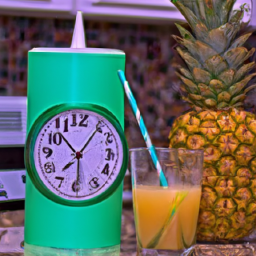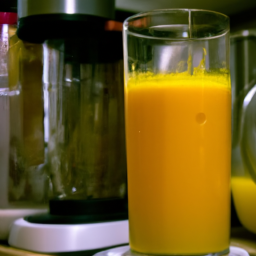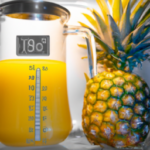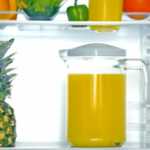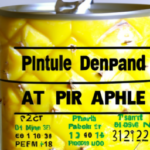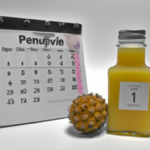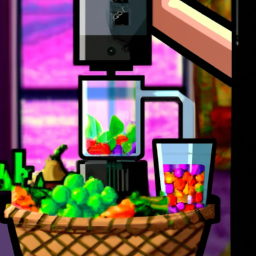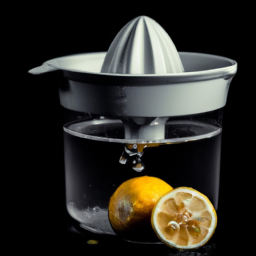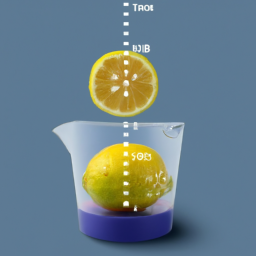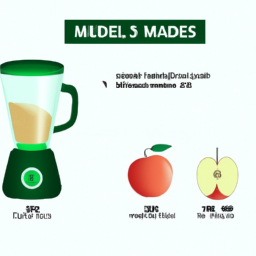I recently bought a bottle of pineapple juice and was wondering how long it stays fresh once opened. As someone who likes to keep a variety of drinks in my fridge, I know how important it is to be aware of the shelf life of different beverages.
After doing some research, I found out that the shelf life of pineapple juice can vary depending on a few factors. In this article, I’ll be sharing what I learned about the shelf life of pineapple juice after opening.
I’ll cover different types of pineapple juice, including fresh, canned, and juice with preservatives, and explain how long each of them can last. I’ll also provide some tips on how to tell if pineapple juice has gone bad and how to make the most out of your leftover juice.
Plus, I’ll touch on the health benefits of pineapple juice and how it compares to other types of juice. So, let’s dive into the world of pineapple juice shelf life!
Key Takeaways
- Fresh pineapple juice lasts up to 5 days in the refrigerator after opening
- Canned pineapple juice can last a long time, but check expiration date before purchasing
- Pineapple juice with preservatives can last up to 2 years, but may impact taste and nutritional value
- Signs of spoilage include sour or strange odor, off taste or weird aftertaste, cloudy or discolored appearance, and mold or bacterial growth
Understanding Pineapple Juice Shelf Life
You’re probably wondering how long your opened pineapple juice will last in the fridge, right? Well, the answer depends on several factors.
Pineapple juice expiration is affected by factors like the processing method used, the type of container it’s stored in, and the temperature at which it’s kept. For instance, freshly squeezed pineapple juice will have a shorter shelf life than processed juice that’s been treated with preservatives.
Also, if you store your opened pineapple juice in a glass container, it’ll probably last longer than if you keep it in a plastic bottle. Lastly, the temperature at which you store your pineapple juice will also impact its freshness.
If you keep it in the fridge, it’ll last longer compared to leaving it at room temperature. In the next section, we’ll discuss the shelf life of fresh pineapple juice and how to tell when it’s gone bad.
Shelf Life of Fresh Pineapple Juice
Once you crack open that sweet, tropical fruit and extract its zesty nectar, the clock starts ticking on the lifespan of your fresh pineapple juice. Unlike packaged options, fresh pineapple juice has a short shelf life and can only last for up to 5 days when stored properly in the refrigerator.
It’s important to note that the nutritional value of fresh pineapple juice starts to diminish as soon as it’s extracted, so it’s best to consume it as soon as possible to reap the full benefits of its vitamins, minerals, and enzymes.
When it comes to choosing between fresh and packaged pineapple juice, it’s important to consider your priorities. While fresh juice may have a shorter shelf life, it’s a great option for those who value taste and nutritional value. On the other hand, packaged options may have a longer shelf life and are more convenient for those who are always on-the-go.
As we move on to discussing the shelf life of canned pineapple juice, it’s important to keep these factors in mind.
Shelf Life of Canned Pineapple Juice
If you’ve opted for canned pineapple juice, it’s important to check the expiration date before purchasing. Canned pineapple juice can last for a long time, but it’s still crucial to make sure it’s fresh and safe to consume.
The expiration date is a good indicator of how long the juice will last once opened. Once opened, canned pineapple juice should be stored in the refrigerator and consumed within a few days.
It’s important to note that the expiration date is not a guarantee of how long the canned pineapple juice will last. The shelf life can vary depending on how the juice is stored and handled. Factors such as exposure to light, heat, and air can affect the quality and safety of the juice.
It’s always better to err on the side of caution and consume the juice within a few days of opening. With that said, let’s move on to the next section about the shelf life of pineapple juice with preservatives.
Shelf Life of Pineapple Juice with Preservatives
Preservatives can extend the freshness of canned pineapple juice by inhibiting the growth of bacteria and fungi, increasing its shelf life by up to 2 years. However, it’s important to note that preservatives can impact the taste and nutritional value of the juice. Some people may prefer preservative-free options for this reason.
When it comes to storing pineapple juice with preservatives, it’s best to keep it in a cool and dry place, away from direct sunlight. High temperatures can accelerate the breakdown of the preservatives, reducing their effectiveness and shortening the shelf life of the juice. Additionally, once opened, pineapple juice should be kept refrigerated and consumed within a few days to ensure its freshness.
To transition into the subsequent section about "how to tell if pineapple juice has gone bad,"it’s important to note that even with preservatives, pineapple juice will eventually spoil. It’s important to know the signs of spoilage so that you can avoid drinking spoiled juice, which can be harmful to your health.
How to Tell if Pineapple Juice Has Gone Bad
To check for spoilage, you’ll want to give the pineapple juice a quick smell and taste test. If the juice smells sour or has a strange odor, it’s likely gone bad. Similarly, if the taste is off or has a weird aftertaste, it’s best to dispose of it. It’s important to note that even if the juice has not reached its expiration date, it can still go bad if it has been sitting out for too long or has not been stored properly.
To help you better understand how to tell if your pineapple juice has gone bad, here’s a table that shows the signs of spoilage:
| Signs of Spoilage | Description |
|---|---|
| Sour or strange odor | The juice smells off or has a strange odor |
| Off taste or weird aftertaste | The taste is unpleasant or has a weird aftertaste |
| Cloudy or discolored | The juice appears cloudy or has changed color |
| Mold or bacterial growth | There are visible signs of mold or bacterial growth |
If you want to store pineapple juice for a longer period of time, it’s best to keep it refrigerated and use it within a week of opening. However, if your juice has already gone bad, don’t worry! There are ways to repurpose expired pineapple juice, such as using it as a marinade for meat or as a substitute for vinegar in salad dressings.
How to Use Leftover Pineapple Juice
Now that we’ve talked about how to tell if pineapple juice has gone bad, let’s dive into how to use up any leftover juice.
One great option is to incorporate it into recipes, such as marinades, smoothies, and cocktails.
Another important consideration is how to store it properly to ensure it stays fresh. I’ll share some tips on how to do so to make the most out of your pineapple juice.
Recipes and Ideas
You’re gonna love the endless possibilities of refreshing drinks and delicious meals you can make with leftover pineapple juice!
One idea is to create tropical pineapple juice cocktails. Mix the juice with some rum or vodka, add some ice, and you’ve got yourself a refreshing drink perfect for summer parties or a relaxing evening at home.
Another option is to use the juice as a marinade for meats or seafood. The enzymes in pineapple juice help to tenderize the protein and add a subtle sweetness to the dish.
But before you start experimenting with these recipes, it’s important to know how to properly store leftover pineapple juice.
After opening the carton or bottle, the juice can last for up to 7-10 days in the refrigerator. However, if you want to extend its shelf life, you can freeze it in an airtight container for up to 6 months. Just make sure to leave some room for expansion as the juice will expand when frozen.
With these storage tips in mind, you can now enjoy your pineapple juice recipes without worrying about spoilage.
Storage Tips
Make sure to store leftover pineapple juice properly to keep it fresh and ready to use in your favorite recipes. One of the best pineapple juice storage hacks is to freeze it in an airtight container with room for expansion. This method will keep the juice fresh for up to six months without losing any of its flavor or nutritional value.
Another preservative-free option is to store the juice in the refrigerator in a glass jar with a tight-fitting lid. This will keep the juice fresh for up to a week.
To maximize pineapple juice shelf life, it’s important to keep it away from direct sunlight and heat sources. Additionally, make sure to always use clean utensils when pouring the juice to avoid introducing any bacteria that could spoil it.
By following these simple tips, you can ensure that your pineapple juice stays fresh and delicious for as long as possible.
Tips to Maximize Pineapple Juice Shelf Life
To keep your pineapple juice fresh for as long as possible, imagine yourself sealing the bottle tightly after each use and storing it in the coldest part of your fridge. Here are some tips to maximize the shelf life of your pineapple juice:
- Keep the juice away from direct sunlight and heat as they can speed up the spoilage process.
- Don’t forget to shake the bottle before pouring as it helps distribute the pulp evenly and prevent separation.
- Use a clean glass or plastic container to pour the juice into and avoid contaminating the remaining juice in the bottle with bacteria from your mouth or hands.
- Consider freezing the juice in ice cube trays if you’re not planning to use it within a few days. This way, you can thaw only the amount you need and prevent waste.
By following these ways to store pineapple juice, you can enjoy its benefits for a longer period.
Speaking of benefits, let’s now explore the health benefits of pineapple juice.
Health Benefits of Pineapple Juice
Now that we know how to maximize the shelf life of pineapple juice, let’s talk about its health benefits. As a nutritionist, I always recommend my clients to include pineapple juice in their daily diet because of its high nutritional content.
Pineapple juice is a good source of vitamin C, which helps boost the immune system and promotes healthy skin. It also contains bromelain, an enzyme that aids in digestion and reduces inflammation in the body.
In addition to its vitamin and enzyme content, pineapple juice is also low in calories and fat, making it a great option for those trying to maintain a healthy weight. The recommended daily intake of pineapple juice is about 8 ounces, which is enough to provide the body with the necessary nutrients without overdoing it on sugar.
Incorporating pineapple juice into your diet can have numerous health benefits, so it’s definitely worth considering as a regular addition to your daily routine.
As we’ve seen, pineapple juice is not only delicious but also packed with nutritional benefits. But how does it compare to other juices? Let’s explore that in the next section.
Pineapple Juice vs. Other Juices
When it comes to juices, pineapple juice is often overlooked in favor of more popular options like orange or apple. However, pineapple juice has its own unique benefits that make it worth considering.
In this discussion, I’ll compare pineapple juice with other juices and explore the pros and cons of incorporating it into your diet.
Comparison with Other Juices
You might be surprised to learn that pineapple juice lasts longer than many other juices after opening, thanks to preservation techniques like pasteurization that help extend its shelf life. Other juices, such as apple and orange juice, have a shorter shelf life due to their higher sugar content, which can cause them to ferment quicker.
Here are some nutritional value comparisons between pineapple juice and other popular juices:
- Pineapple juice contains more vitamin C than orange juice.
- Cranberry juice has been shown to help prevent urinary tract infections.
- Pomegranate juice is packed with antioxidants and has been linked to reducing the risk of heart disease.
It’s important to keep in mind that while pineapple juice may last longer than other juices, it still has a limited shelf life once opened. It’s best to consume it within 7-10 days after opening to ensure its freshness and quality.
Moving on to the next section, let’s take a closer look at the pros and cons of drinking pineapple juice.
Pros and Cons
If you’re debating whether or not to add pineapple juice to your diet, it’s important to weigh the pros and cons. On one hand, pineapple juice is a great source of vitamin C, which can boost your immune system and help fight off infections. It also contains bromelain, an enzyme that can aid in digestion and reduce inflammation.
However, there are also some potential drawbacks to consuming pineapple juice. One concern is its high sugar content, which can contribute to weight gain and other health issues if consumed in excess. Additionally, some people may experience digestive issues or allergic reactions to bromelain. Before incorporating pineapple juice into your diet, it’s important to consider your individual health needs and consult with a healthcare professional. In the meantime, here is a table to help you compare the nutritional value and uses of pineapple juice with some popular alternatives:
| Juice | Calories per 8 oz. | Vitamin C | Bromelain | Uses |
|---|---|---|---|---|
| Pineapple | 130 | 40% DV | Yes | Smoothies, cocktails, marinades |
| Orange | 110 | 120% DV | No | Breakfast juice, smoothies |
| Apple | 120 | 2% DV | No | Cooking, baking |
| Cranberry | 120 | 26% DV | No | Cocktails, urinary tract health |
| Grapefruit | 100 | 72% DV | No | Breakfast juice, salads |
As you can see, pineapple juice is a bit higher in calories than some of its counterparts, but it also boasts a higher vitamin C content and the added benefit of bromelain. However, if you’re looking for a juice with lower sugar content, apple or grapefruit juice may be a better choice. Ultimately, it’s important to consider your own nutritional needs and preferences when choosing a juice to incorporate into your diet.
Frequently Asked Questions
Can you freeze pineapple juice to extend its shelf life?
Yes, freezing pineapple juice can extend its shelf life and preserve its flavor. However, it may affect the texture and quality of the juice. It’s recommended to consume within 6 months of freezing.
How long does pineapple juice last if it’s not refrigerated?
Pineapple juice is like a ticking time bomb without refrigeration. Its shelf life is limited to 8 hours at room temperature. After that, it becomes a breeding ground for bacteria and can cause food poisoning.
Is it safe to drink pineapple juice after its expiration date?
Drinking expired pineapple juice can have a negative effect on health due to potential bacterial growth. Alternatives include checking the expiration date, storing it properly, or opting for fresh pineapple instead.
Does pineapple juice lose its nutritional value over time?
When it comes to pineapple juice, the effects of storage on nutrient retention can be significant. A shelf life analysis reveals that vitamin loss is common over time, so it’s best to consume pineapple juice shortly after opening for maximum nutritional benefit.
Can you mix pineapple juice with other beverages to create a new flavor?
Yes, I often mix pineapple juice with other beverages to create delicious Pineapple juice cocktails or Pineapple juice smoothies. It’s a great way to experiment with flavors and get creative in the kitchen.
Conclusion
In conclusion, understanding the shelf life of pineapple juice is crucial in ensuring that you get the most out of this delicious and nutritious drink. Whether you prefer fresh, canned, or preserved pineapple juice, it’s important to know how long it’ll last after opening.
By following the tips provided in this article, you can maximize the shelf life of your pineapple juice and enjoy its health benefits for longer. Pineapple juice isn’t just a refreshing drink, it’s also a symbol of the tropical paradise we all dream of. Its vibrant yellow color and sweet taste can transport us to a place of relaxation and happiness.
So, next time you enjoy a glass of pineapple juice, remember to savor its flavor and appreciate the benefits it provides for your health. Cheers to a long and fruitful shelf life of pineapple juice!
Ilana has been a vegan for over 10 years. She originally made the switch for health reasons, but soon found herself becoming more and more passionate about the ethical and environmental implications of a vegan lifestyle. Ilana is the author of The Graceful Kitchen, a blog all about veganism. She loves to cook up delicious and nutritious vegan meals, and share her recipes with others who are interested in leading a cruelty-free life. Ilana is also a strong advocate for using whole foods as the foundation of a healthy diet, and believes that going vegan is one of the best ways to achieve this.
